IT’S AN UNFORTUNATE reality that most travelers to Africa focus on a few select destinations like Egypt and South Africa, missing out on much of what the rest of the continent has to offer. Turn your eyes east to Ethiopia, and you’ll discover a world of natural beauty you may not have considered before. Despite the current ongoing conflict in Ethiopia’s Tigray region, the country has historically been one of the continent’s safest and most stable, and continues to offer travelers innumerable reasons to visit. From the epic Blue Nile Falls to the otherworldly Dallol volcano (the hottest place on Earth), it’s no wonder Ethiopia has more UNESCO World Heritage sites than any other African country. These are the most breathtaking sites in Ethiopia that will make you wonder how you ever overlooked it.
1. The Simien Mountains
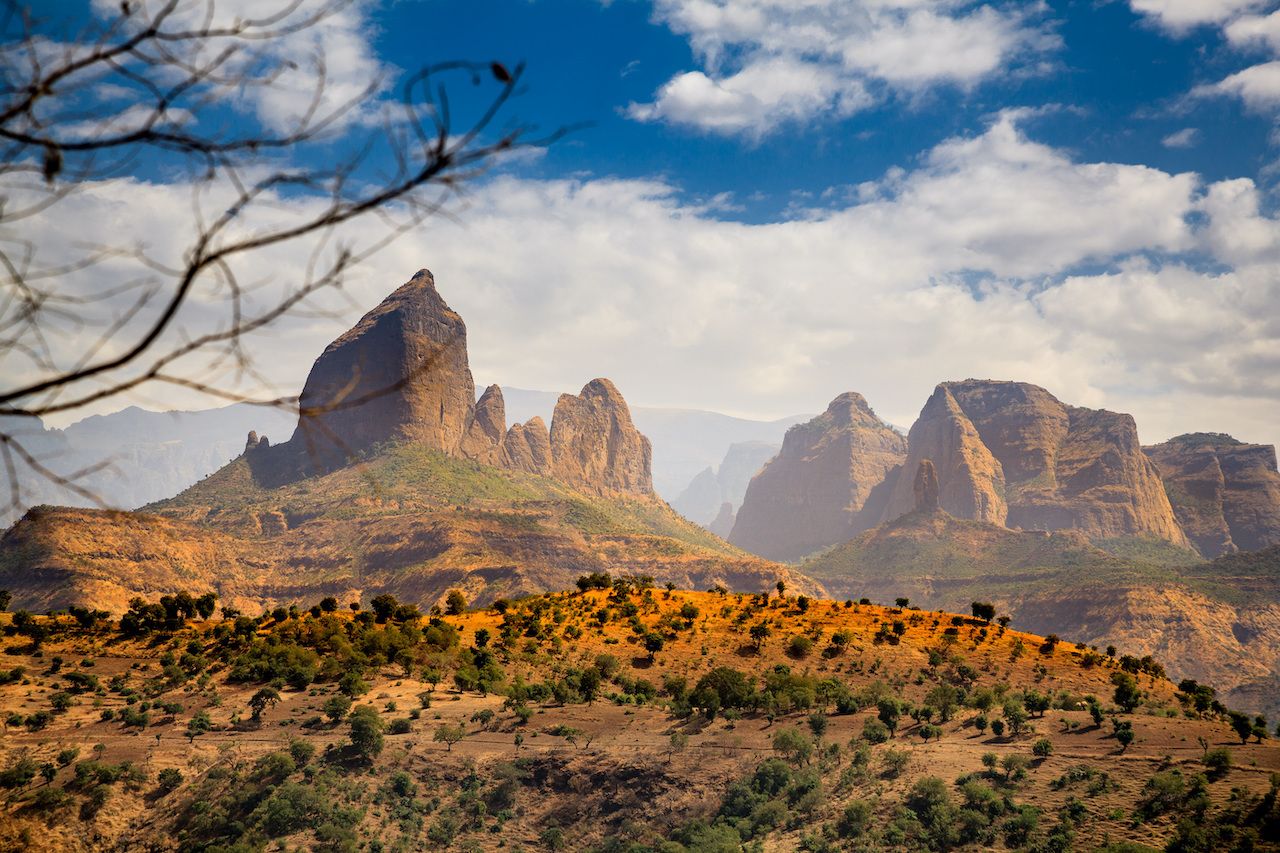
Photo: Radek Borovka/Shutterstock
Simien National Park in northern Ethiopia is a UNESCO World Heritage site. The Simien Mountains include Ras Dejen, the highest point in the country, and there is no shortage of views of the lowlands below. Stretching 100 miles, and reaching an altitude of 15,000 feet, the mountains are one of the largest ranges in Africa, and are also home to a diverse ecosystem, including rare animals such as the gelada baboon, walia ibex, and Ethiopian wolf.
2. Blue Nile Falls

Photo: Aleksandra H. Kossowska/Shutterstock
Zambia’s Victoria Falls usually hogs the continent’s limelight when it comes to waterfalls, but Blue Nile Falls in Ethiopia also deserves a seat at the cool kids table. Called “Tis- Isat” by locals (meaning “Smoke of Fire”), the Blue Nile Falls are the most dramatic waterfall anywhere on the Nile. They stretch a quarter-mile wide during the flood season between June and September, and cascade down over 150 feet. The “smoke” nickname is derived from the mist rising up from below. There are several hiking trails through the green countryside around the falls, and if you’re lucky, you might even run into some of the forest’s resident monkeys or birds.
3. Arba Minch
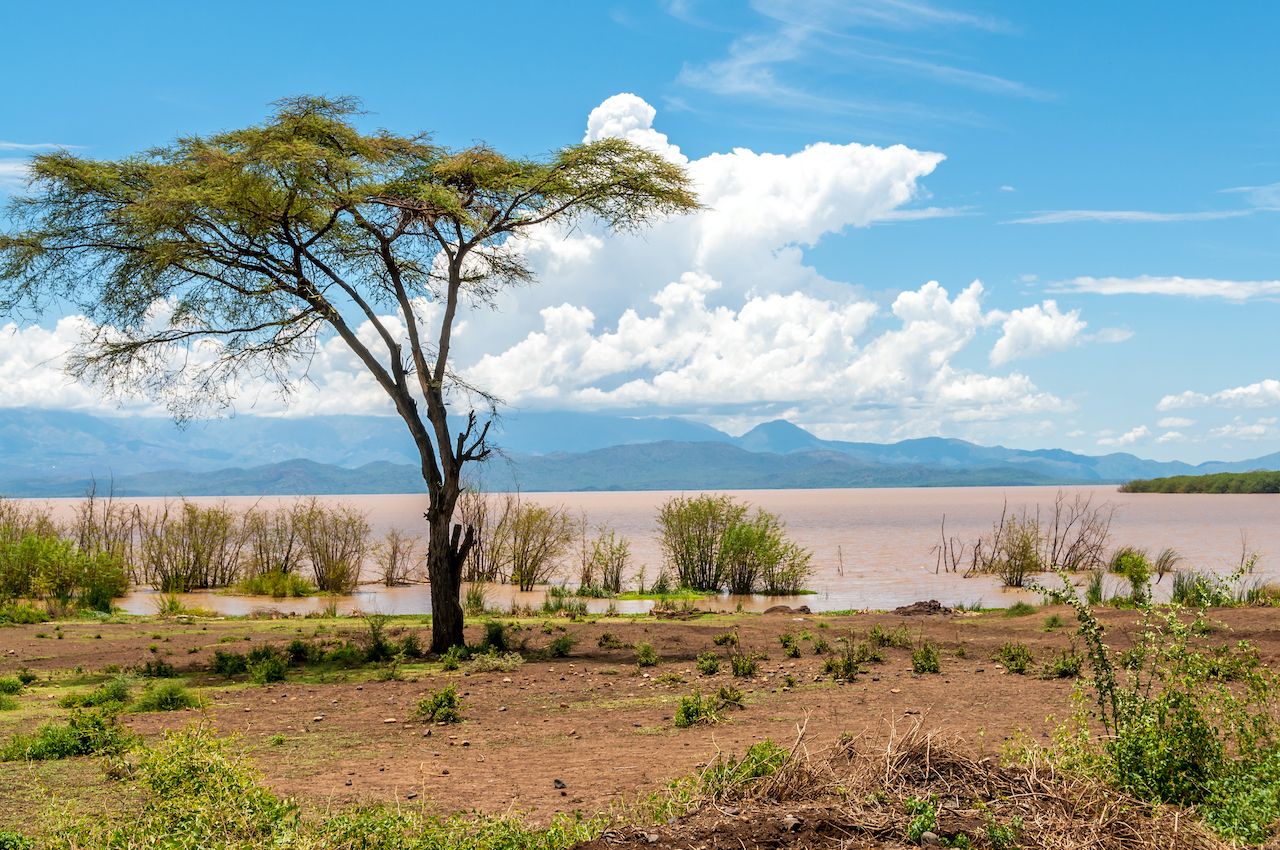
Photo: milosk50/Shutterstock
In Arabic, Arba Minch means “forty spring,” and that moniker isn’t far off. The area has an abundance of small springs, and two of the largest lakes in the country (Chamo and Abaya). The town of Arba Minch itself sits 4,200 feet up in the foothills of the Rift Valley, with incredible views of the surrounding Nechisar National Park. The rock church of Abuna Yemata is perhaps the most notable human-made sight, at an altitude of 8,500 feet and accessible via a challenging climb up a cliff wall. It’s known for its wall paintings dating back to the fifth century.
4. The Danakil Depression
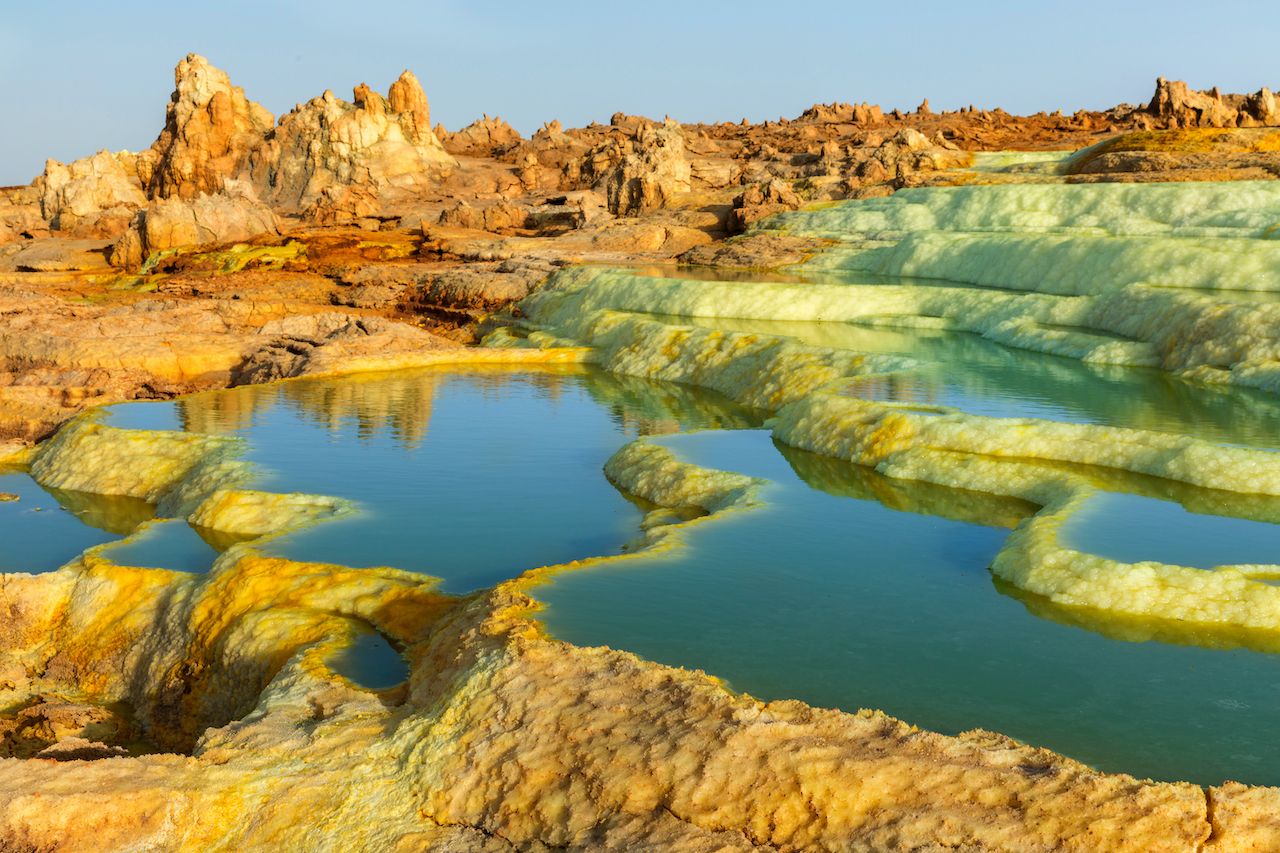
Photo: Manamana/Shutterstock
Ethiopia might sound like a tempting warm-weather escape during the winter months, but the Danakil Depression might be more than you signed up for. In northern Ethiopia, this is one of the lowest, hottest, and driest places on Earth. It’s home to the Erta Ale lava lake, one of just six lava lakes on Earth, and Dallol — a boiling hot spring that resembles a strangely colorful apocalyptic hellscape more than anything else. This might not sound like a ringing endorsement, but Dallol’s sulphur springs are one of the most geographically unique landscapes anywhere in the world, and worth the temporary physical discomfort of a visit.
5. Awash National Park
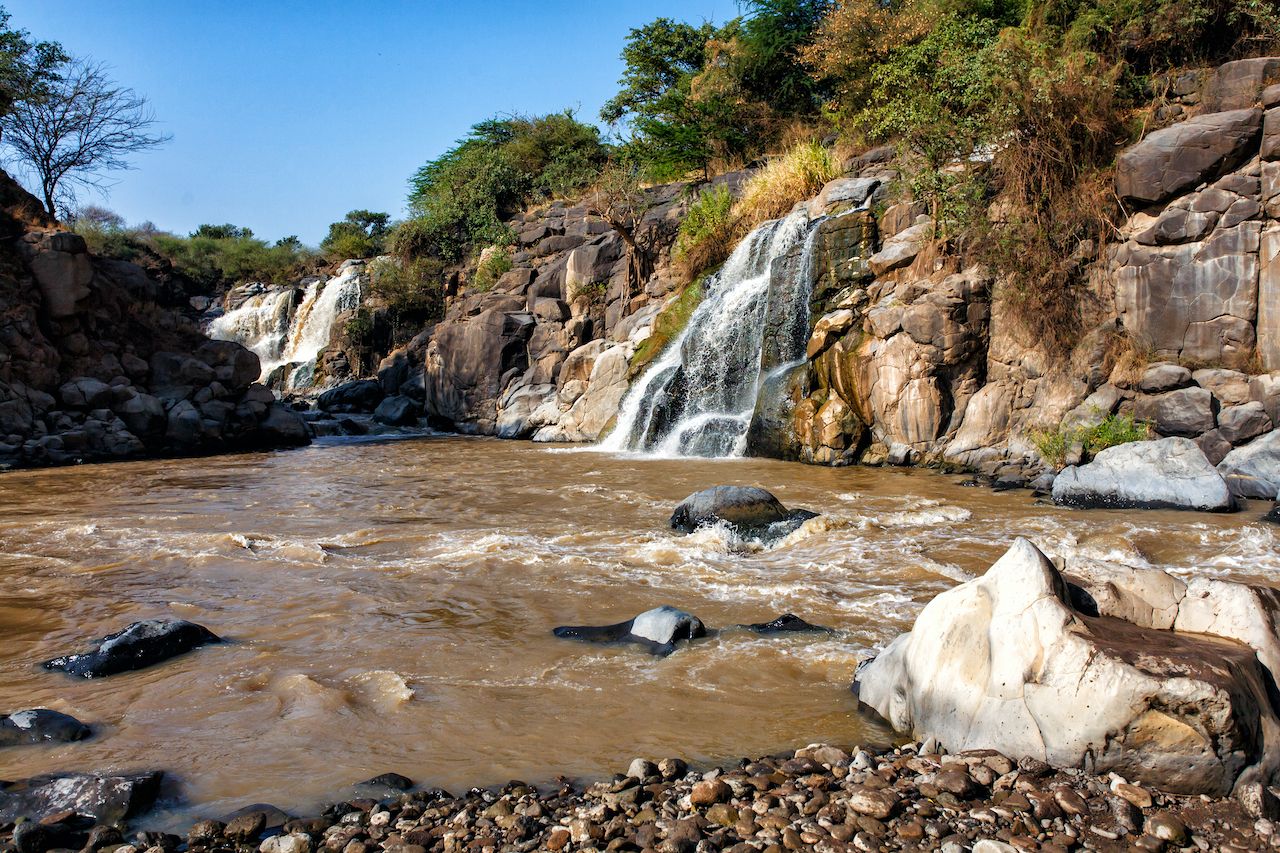
Photo: Henk Bogaard/Shutterstock
Located in the dry savanna of the Rift Valley, Awash National Park is home to a 500-foot-deep gorge, waterfalls, and the dormant volcano of Mount Fantale. There’s also the Filwoha Hot Springs — don’t worry, they’re not as hot as Dallol — which feed Lake Beeska and a network of blue pools. The park is also considered one of Ethiopia’s best destinations for birding, with over 450 species spotted there including yellow-throated serin and the Ethiopian cliff swallow. If you’re more interested in larger creatures, warthogs, black-backed jackals, and East African oryx also call the park home.
6. The Gheralta Mountains
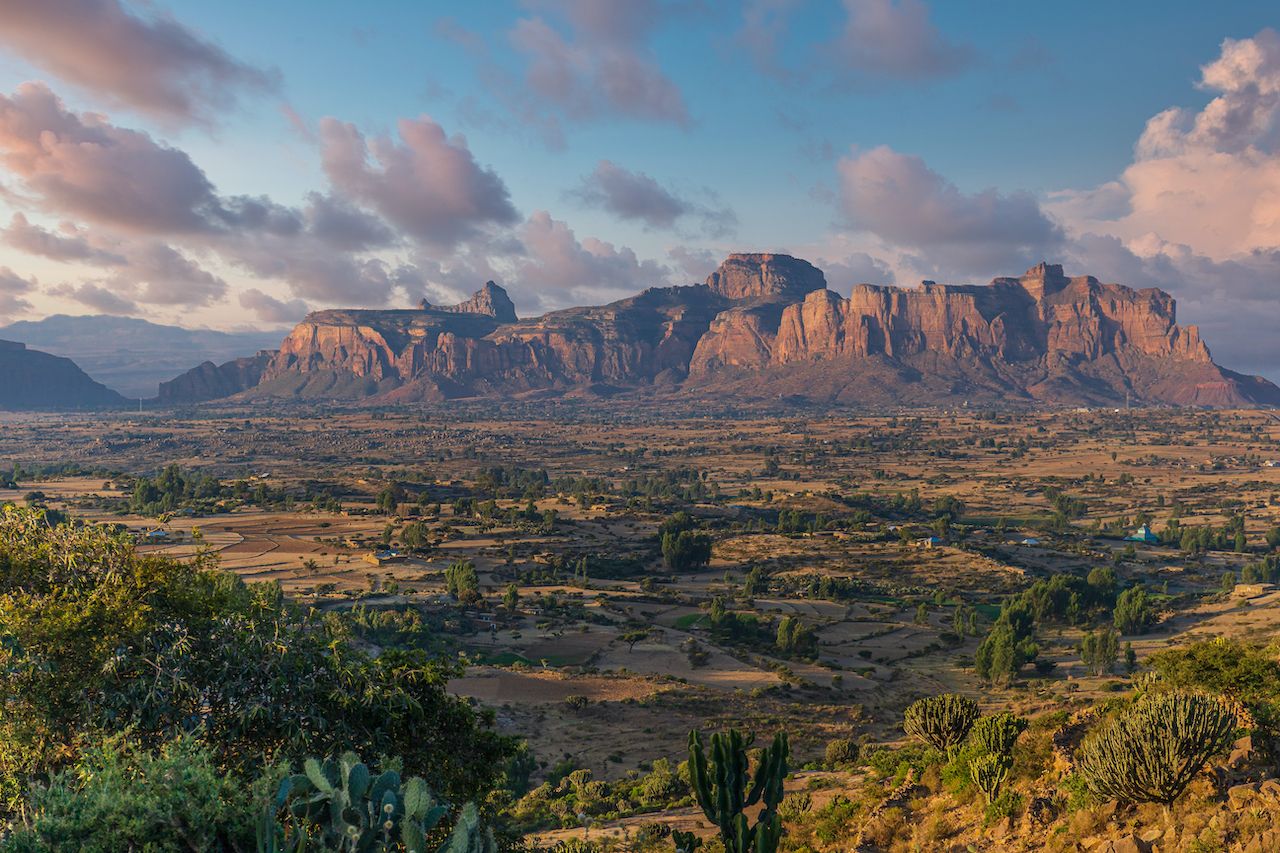
Photo: Framalicious/Shutterstock
This corner of northeastern Tigray almost resembles the American West, with its flat plains and distinct, mountainous rock formations reminiscent of Utah’s Monument Valley. The mountains themselves are known as Gheralta, and they’re quite a departure from the strange landscapes of Dallol and lush springs of Arba Minch. Gheralta is best known for its cluster of 35 rock-hewn churches, the largest such collection anywhere in the country. Many sit on rock outcroppings accessible only via narrow, treacherous-looking escarpments.
7. Bale Mountains National Park
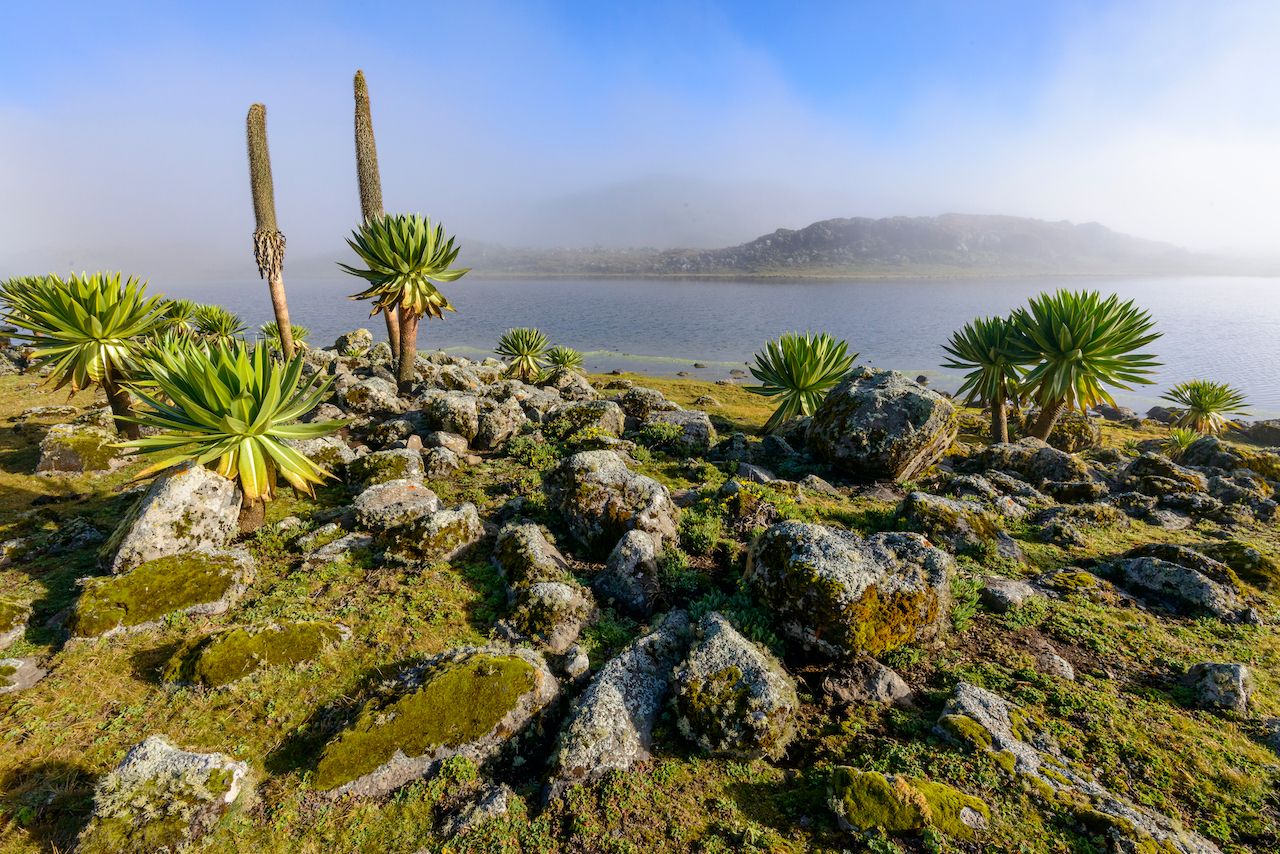
Photo: Roger de la Harpe/Shutterstock
Another of Ethiopia’s UNESCO World Heritage sites, Bale Mountains National Park covers around 850 square miles and has some of the most diverse geography in the country with towering mountains, scenic valleys, and miles of forests. Its Sanetti Plateau is the largest such plateau at this altitude on the entire continent, and it’s considered one of the best places in the world to see the rare Ethiopian wolf
